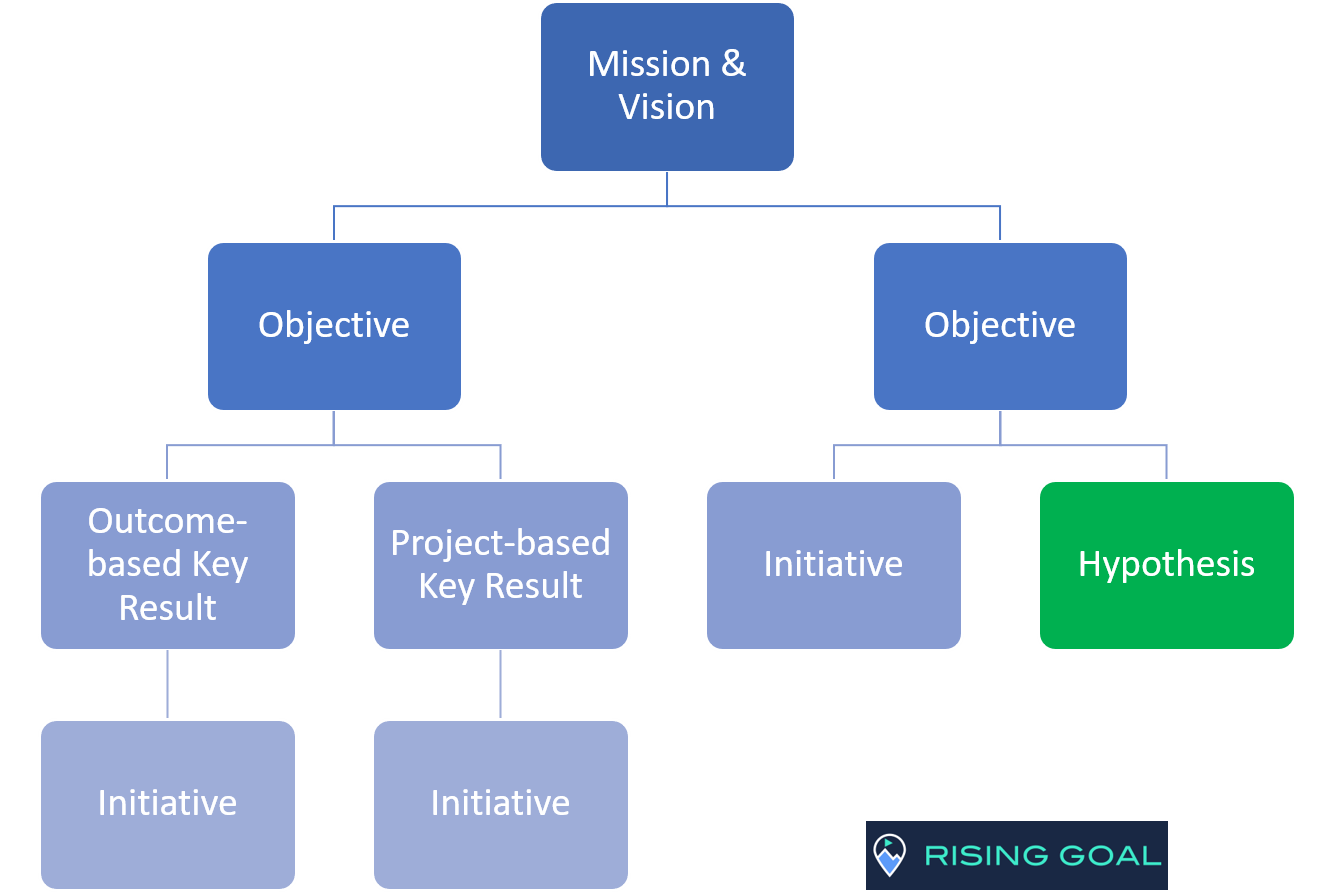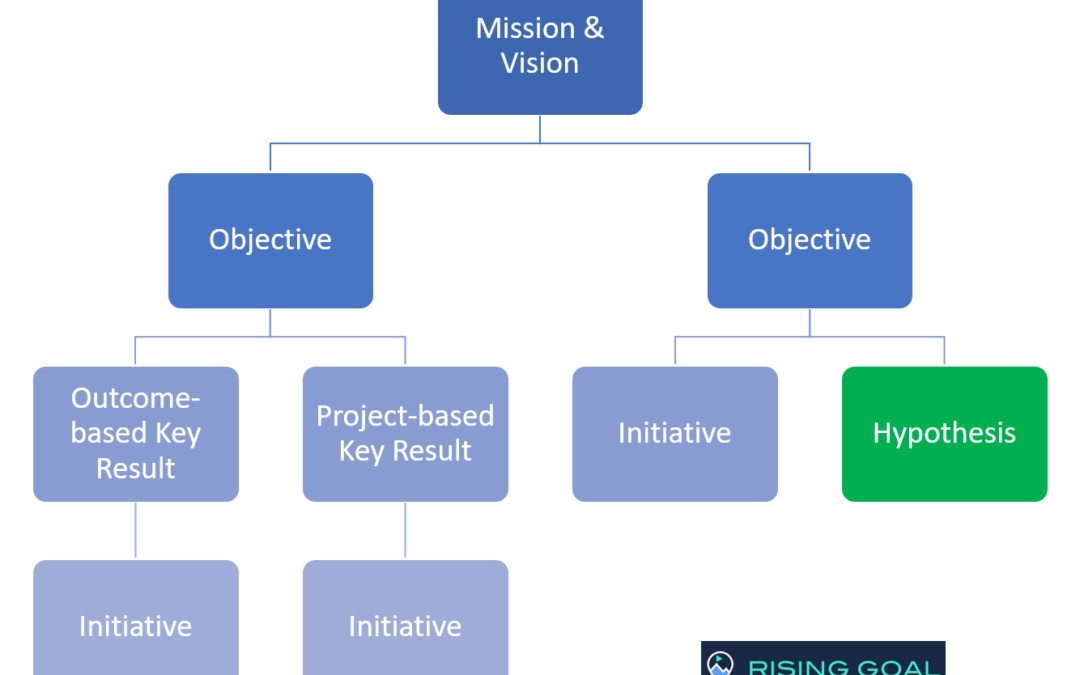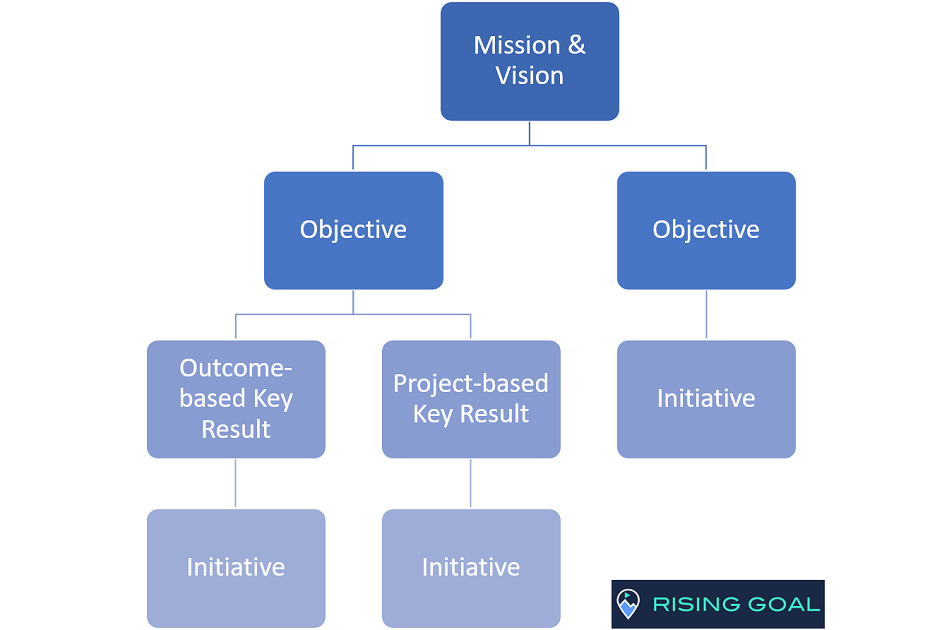Hypothesis in the OKR Model
In this article, let’s explore the place of hypotheses in the Objective and Key Results (OKR) model.
Intro
Hypothesis of an OKR
In a first article, we explored the model of key objectives and results. This is a good starting point for developing measurable goals. This model is good enough to create alignment around organizational priorities.
Then, we enriched the model with initiatives. The result was a link between objectives, whether strategic or tactical, and their agile execution.
Alignment, prioritization, execution and monitoring are challenges that many manager faces. All the more so in an agile context, where collaborative and self-organization practices can complicate the task. Even if benefits of these practices are no longer to be discussed.
Let’s now look at the place that hypothesis can take in the OKR model.
Continuous improvement in an OKR program
However, while goal achievement is one thing, longer term continuous improvement is a matter in itself.
The regular pace and frequency of OKR cycles allows you to enter a process of improvement. You can improve both the process itself and the quality of the objectives.
This method offers a very quantitative approach thanks to the format of the key results. It helps to have very effective discussions around the objectives and their success at the end of the cycle.
The data used by the key results and their quality (the confidence we have in that data) is a key factor in these factual discussions. To the point of postponing the formulation of an OKR the time to have access to this data and to clean it.
In many companies, although the literature and leaders of this approach advise against it, so do I, OKRs are part of the employee appraisal process. But if the system is biased, the discussion will not be the same. Neither can employee engagement and feedback.
It is obvious that the quality of these discussions will depend on the quality of the OKRs themselves.
And these discussions are the starting points for continuous improvement. They are the ones that will help you find the right implementation of your goal management process within your organization. And find the right content, the right granularity, the right approach.
But there can be a gray area behind OKRs and goals in general. Let’s take the following example :
Objective
Become a major player in the soft OKRs market by the end of the year
Key Result #1
Win 5 new OKR Coaching Partnerships by the end of the quarter.
Key Result #2
Decrease our partnership Lead Time Process from 60 days to 30 days by the end of september.
Hypothese
- Our specialized elearning contractor have completed the online training for OKR coaches by may
OKR Examples
You can find this and other examples in our saas solution
In this exemple, we must win 5 new partnerships. Either this objective is the result of the projection of our historical data on the number of partnerships formed. In this case, you’re more on the subject of KPI .
With KPI, the goal is to keep the key indicators of your existing business under control. If you have an average of 4 partnerships per quarter, setting a goal of 5 can still be a challenge. But above all, it’s a way to stay at your best.
But behind the notion of OKR, there is the notion of impact and change.
Hypothesis in the OKR Model
Enrich the model with hypotheses
So we come to the notion of scenario. Back to our example, we want to decrease our partnership lead time process from 60 days to 30 days. This is a business need. But to acheive this result by the end of september, you need to make significant changes. Especially if your lead time has been 60 days for years.
You cannot change the result without changing the system that produces it. So, you may have a scenario in your mind, made of hypotheses and initiatives, to be ambitious but realistic. Even if the initiatives may change during the execution phase.
Lead time, for example, is an end-to-end measure. It involves the intervention of all actors in the process, including subcontractors or partners if there are any. The assumption in this case could be that the subcontractor X engages with you on this objective. Which is not always the case…
The assumptions are especially useful when the team which hold the objective is not responsible for the whole process.
In our exemple, the hypothese can be that the online training is ready. This is an hypothese if the training is done by a subcontractor, specialist in e-learning. Otherwise, it would be an initiative if the team can do id.
This is a good practice to keep track of these assumptions for taking an objective assessment at the end of the cycle of whether or not the goal has been met.
Hypotheses and initiatives
In addition, hypotheses allows you to react and quickly change initiatives along the way if they do not turn out to be the right ones. Their following up on them during objective reviews can be a guarantee of success!
In fact, being clear on the assumptions also make it possible to work on alternative scenarios upstream, to know your options, and to prepare to pivot. With these concepts, we touch more precisely what tactical agility is, where agile methods are more about operational (and behavioral, managerial) agility.
When I talk about assumptions, I am not talking about initiatives. Initiatives are ideas for testing the validity of your hypotheses. In our last article, we have seeen how OKR enable agility. That they could approach the notion of Lean Startup experimentation to test the hypotheses.
This is what Jeff Gothelf also suggests in one of these latest posts. He provides tools to make the link between these assumptions and the teams backlog.

Conclusion
In this article, we saw that :
- The OKR model can be enriched with hypothesis.
- Making them visible and tracking them triggers factual discussions at the end of the cycle.
- Better discussions accelerate the process of continuous improvement.
- These assumptions are a good starting point to identify the first initiatives to be taken to reach our goal.
- They also allow better decisions to be made during the cycle.
Explore the full Rising Goal Model
Our solution has a complete model from strategy to execution, with Strategy, OKR, KPI & initiatives!
What’s next?
Learn about OKR Cycle
To conclude this series of posts on the OKR model and how to enrich it, we will take a closer look at OKR cycles.
Related Posts
OKR Cycle
OKR cycle will allow you to define and organize the life cycle of your OKRs in your organization. Set the medium-term and short-term goals.
OKR Initiative
In this article we will explore the place of the initiatives in the Objective and Key Results (OKR) Model, to link strategy and operation







Recent Comments